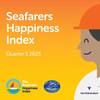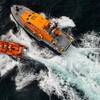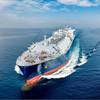AVEVA Congratulates University of Newcastle
SNAME Maritime Technology Conference -- The University of Newcastle's School of Marine Sciences & Technology today announces its M.Eng students have won both first and third place in the prestigious 2005 Society of Naval Architects & Marine Engineers (SNAME) conference. The accolades mark the ninth time the school has placed in the top three since 1995: seven times in first place and once in second. The Stage 4 Group Ship Design Project at the University of Newcastle brings together M.Eng students studying for M.Eng (Hon) Marine Technology in numerous disciplines. The projects were designed with AVEVA's Tribon solutions.
The Dr. James A. Lisnyk Student Ship Design Competition (SSDC) Award, organized by the SNAME Education Committee, is open to undergraduate student members of SNAME and the American Society of Naval Engineers in their final undergraduate year and attracts entries from universities the world over. Its aim is to stimulate interest in ship design as a career choice and to increase students' understanding of competence in ship design. This year's winners are Naval Architecture student Laura Philips, Small Craft Technology student Philip Wykeham and Marine Engineering students Shaw Chuan Ivan Lim Michalis Christoforou and George Georgiou. The group awarded third prize was led by Naval Architecture student Ben Graat in the design of a novel double-acting CNG carrier concept.
The winning group identified a need for a novel and innovative Live Food Fish Carrier for the lucrative transatlantic live lobster trade route between Europe and New York to meet the increasing European demand for the live American Lobster. An extensive economic study and fleet analysis for the route suggested a single monohull vessel on the route with a length of 124.3m, a displacement of 20,000 tonnes, a service speed of 20 knots and carrying a payload of 5,400 tonnes. The lobsters are shipped in a specially-designed cold, wet environment in four tanks with refrigerated sea water circulation. The vessel has diesel electric propulsion driving two compact azipod propulsors.
"As with all the winning entries of previous years, the groups that took part in the competition used the Tribon Initial Design Suite of programs in developing and evaluating their design," said Dr. Peter N. H. Wright, who teaches ship design at the university.
"AVEVA's Tribon Surface/Compartment module facilitated the hull form development by allowing distortion of a parent form and control over the derived form to meet the requirements of the design; providing a suitably fine form with aft lines appropriate for azipod propulsion as well as modelling the cargo holding system and other spaces. Tribon then allowed extensive hydrostatic and hydrodynamic evaluation of the proposed design through the Calc/Hydro module."
The use of Tribon Initial Design for undergraduate teaching purposes at Newcastle has been a great success, evolving to assist students in becoming familiar with the software. These teaching methods have been developed as a close cooperation between Dr. Wright, Graeme White of AVEVA and Keith Hutchinson of naval architecture consultants Armstrong Technology. They bring together the requirements for an academic teaching environment, a software developer and an industry expert user respectively.










